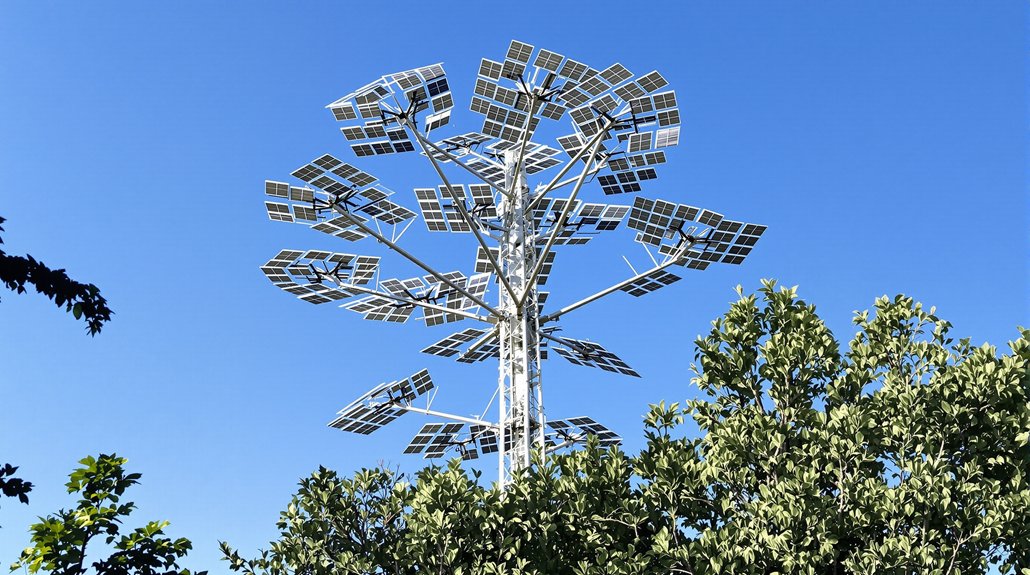Invisible heroes. That’s what molecular bridges are in today’s cutting-edge perovskite solar cells. They work silently at the nanoscale, connecting perovskite layers to transport layers like matchmakers on a molecular dating app. And they’re good at their job. Really good. These microscopic connectors simultaneously enhance interface quality and charge transfer, basically telling electrons and holes exactly where to go. No confusion, no wasted energy.
The double molecular bridge concept is where things get interesting. Compounds like 4-F-PEAFa form two distinct bridges at different interfaces. One bridge at the hole transport layer, another at the electron transport layer. Smart, right? They’re multitaskers in a world of specialists. These bridges don’t just sit there looking pretty – they actively facilitate rapid hole extraction while enhancing electron mobility. Balance is everything in the solar cell world.
Molecular multitaskers working double duty at interfaces—the unsung heroes balancing electron flow in next-gen solar cells.
Here’s the kicker: molecular bridges reduce material complexity. One compound. Multiple interfaces. Streamlined fabrication. Who doesn’t love efficiency? These bridges stabilize the electronic environment by tweaking surface binding energies. Chemistry at its finest.
The numbers don’t lie. Power conversion efficiencies hitting 25.1%. Fill factors exceeding 84%. And these cells maintain over 87% of initial performance after 1000 hours. That’s durability you can count on.
Let’s talk chemistry. Compounds like 4-fluorobenzylphosphonic acid (4F-BPA) dissolve into the perovskite precursor – about 80% of it, actually. This promotes controlled crystallization and creates better interfaces. The strong coordination between these bridges and lead cations at the interface? Game-changing.
Energy alignment matters too. Molecular bridges match energy levels between layers like a perfectly tailored suit. No energy-wasting gaps. No awkward shifts. Just smooth electron flow. The DMB strategy enables significant buried interface modification for inverted perovskite solar cells, a critical advancement for next-generation photovoltaics. These interfaces help minimize recombination losses that traditionally plague perovskite devices.
The bottom line? These molecular bridges are revolutionizing solar cell technology from the inside out. Interfaces matter. Chemistry matters. And sometimes, the most important players are the ones you can’t see.
References
- https://bioengineer.org/record-setting-performance-achieved-with-molecular-double-bridges-in-perovskite-solar-cells/
- https://pubs.rsc.org/en/content/articlelanding/2025/mh/d5mh00084j
- https://pmc.ncbi.nlm.nih.gov/articles/PMC12187635/
- https://www.nature.com/articles/s41467-022-34768-7
- https://advanced.onlinelibrary.wiley.com/doi/10.1002/adma.202514273
- https://www.nature.com/articles/s44296-025-00073-9
- https://www.eurekalert.org/news-releases/1104139








